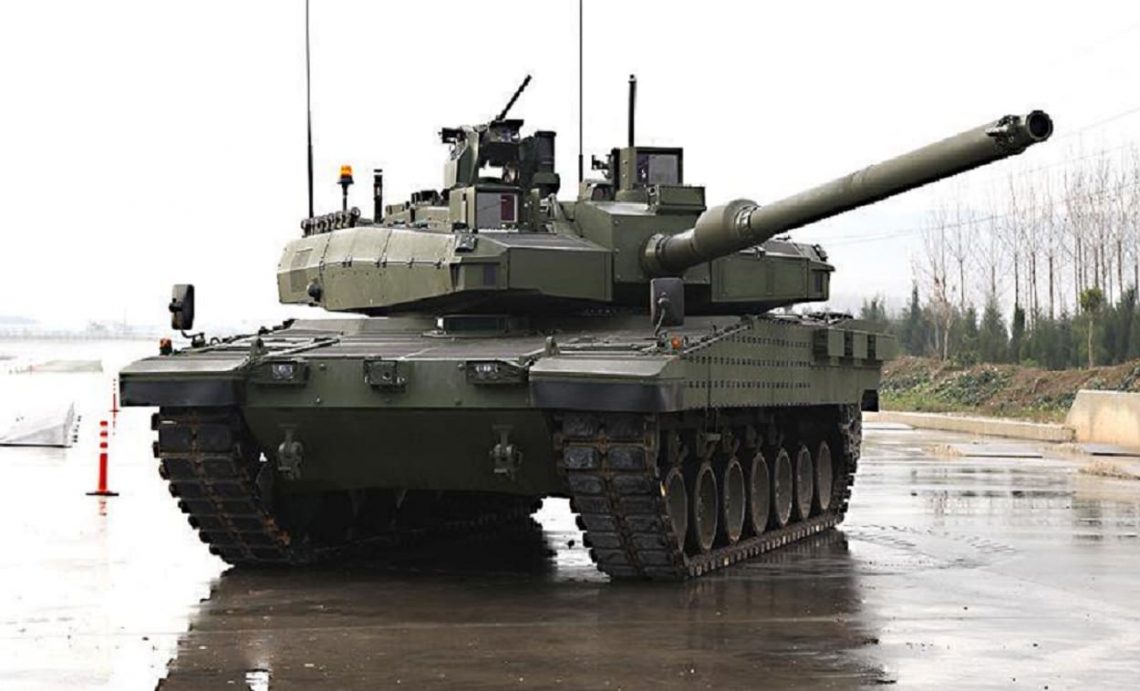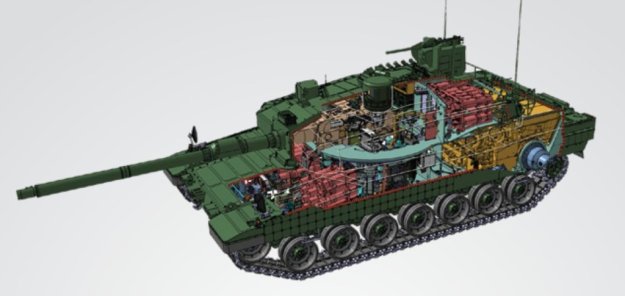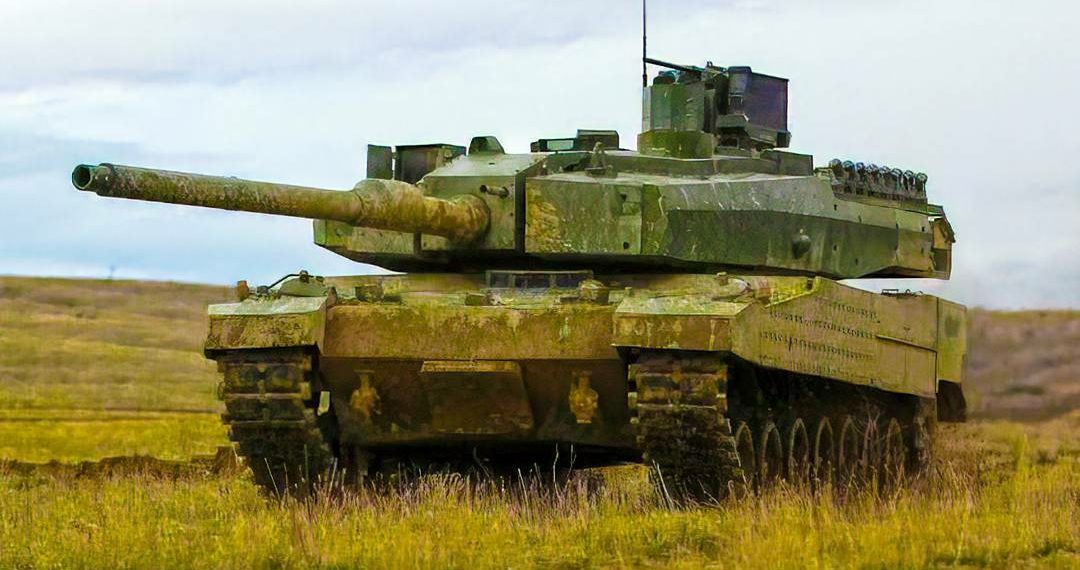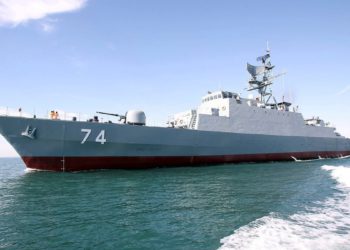Background:
The Altay is Turkey’s effort to enter the forum of tank producing nations. Originally conceived in 1994 under the National Main Battle Tank Project, it was intended to create the foundation for a domestic industrial capability to manufacture and field a modern battle tank. After a decade of design and proposal reviews and with heavy foreign support, in 2005, the study was completed. The Altay formally received an initial development contract which was granted to Turkish defense firm Otokar in July 2008, focusing on producing several vehicles for testing, with a further planned production run of 1,000 tanks to be procured in four separate blocks. Within a few years, the Turkish government opened the bidding and production to various other companies, to include a privately owned firm with armored combat vehicle manufacturing experience; BMC. This in turn led to a land grant for BMC to establish a new production facility, ideally created for tank production in 2016.As of 2020, the Altay is close to being ready for LRIP and the initial procurement of the first set of tanks.
Program Vision and Overview The Altay Main Battle Tank will serve as the Turkish Army’s principle combat vehicle tasked to maneuver through the enemy’s disruption zone as part of a combined arms team for the purpose of creating an advantageous position, relative to the enemy, to deliver decisive lethal effects. The Altay complements and enhances the capabilities of the Turkish Army combined arms formations. The Altay will initially supplement and then replace the Turkish Army’s legacy main battle tanks, notably the M48A5 T1 and T2 series and their Leopard 1 T1 series. This will provide the Turkish Army a decisive combat vehicle while possessing sufficient growth and modularity to take advantage of future technologies, as they develop. The Altay will also serve as a foundation for future designs and developments for the Turkish defense industry and one that is aimed at the defense export market.
Designed for decisive operation
The Altay is designed to be deployed and transportable by standard rail, sea, waterway and road modes of transportation. It is designed to be survivable against current and emerging threats that the Turkish Army is expected to face. The Altay, will serve as the main element for lethal and decisive operations for the Turkish Army by employing speed, agility and accurate fires. The Altay is able to deliver accurate, while on the move fire through its Volkan–III modular fire control system, which was achieved through collaboration with South Korea and their K2 program. Lastly, the Altay’s ability to ford several feet of water, will provide additional operational flexibility and increase the tactical employment options for Turkish commanders.
Lethal formations The vehicle possess the necessary embedded training and planning software to help prepare crews by conducting collective training, mission preparation and mission execution to facilitate tactical success. The Altay will provide situational awareness, target acquisition data and critical information to orient on the threat. The Altay at this time is unable to receive and pass information horizontally and vertically, within an integrated battlefield network. It is anticipated that the Altay will provide lethal direct fires against expected armored threats and must defeat future tanks, infantry fighting vehicles, helicopters, small unmanned aerial systems as part of a combined arms battalion. The Altay will obtain rough parity with other nations that employ non DU sabot rounds. The Turkish licensed built, South Korean copy of the L/55 120mm cannon will likely employ a tungsten based sabot round, modeled after the South Korean K279, and would likely have similar ballistic penetration capabilities. This munition will give the Altay the ability to engage expected threats out to a range of 2,500 meters.

Vehicle Vulnerability Analysis
Defensionem assess via use of a fault tree analysis that cover the main subsystems that, if damaged or destroyed, would cause a communication, mobility, lethality, or catastrophic kill. These types of kills are defined below.
Communications Kill
The vehicle experiences a communications-kill if it is damaged to the extent that it cannot transmit or receive information by its electronic communication equipment, and the damage is not repairable by the crew on the battlefield within 10 minutes. Due to the Altay employing advanced third generation communication systems, mounted externally, with no ballistic protection, the probability of this occurring is moderate to high.
Mobility Kill
The vehicle experiences a mobility-kill if the damage causes the vehicle to be incapable of performing any of the mobility requirements of its assigned mission, and the damage is not repairable by the crew on the battlefield within 20 minutes. While the Altay is designed to employ an active APS system, it is a design limited due to placement and its focal arch. Further, due to the Altay not having advanced ballistic protection over its #1 and #2 skirts, the probability of a mobility kill occurring is moderate to high.
Lethality Kill
The vehicle experiences a lethality-kill if the damage causes the vehicle to be incapable of performing any of the lethality requirements of its assigned mission, and the damage is not repairable by the crew on the battlefield within 10 minutes. The Altay will employ licensed copy of the South Korean L/55 cannon, itself a licensed copy of the German L/55, which incurs additional droop when firing. This considered with the environmental factors will cause significantly more wear on the gun tube and likely result in subpar reliability, over time, which will lead to gun tube fragility. Probability of a lethality kill for main armament systems occurring is deemed as low. Additional concerns are raised due to the form of turret power it receives. A lethality kill will occur if the tank batteries are destroyed or disabled, thus rendering the RWS inoperable as well as the turret, due to reliance on the power supply for turret operations. The RWS mounted 12.7mm weapon is located center rear of the turret, without ballistic protection and rated as one meter above the turret, thus exposed, leads to the conclusion that a crew member must exit the turret, and fully expose themselves in order to fix, reload or maintain the RWS. Further, the location of the RWS increases the chances of accidental damage to the gun tube or independent viewer from the RWS firing or sustaining a “runaway” discharge. The probability of the secondary weapon being damaged is deemed moderate to high.

Catastrophic Kill (K-kill)
The vehicle suffers a catastrophic-kill if the damage is so extensive that the vehicle is not economically repairable. Items carried on-board the vehicles whose detonation or ignition could result in catastrophic damage would be items such as ammunition, fuel, oil, fluids, etc. Defensionem estimates the Altay will likely have between 575-625mm of RHA armor over the frontal 60 degree arch of the turret. The Altay uses a composite mixed armor, encapsulated in steel plates which are modular in nature. This design is intended to increase battlefield damage repairs, but causes two significant shortfalls; the first being that the mounted armor modules must be fitted into a preexisting slot, and are not an integrated as an “organic armor package”, this results in a lower collective hardness, which would not reinforce the density as the entirety of the armor package is two separate components. The second design shortcoming is related to turret design. Analysis employing a TECHINT perspective and through visual comparison, allow for a rough estimate of armor protection to be had. It is therefore probable that the Altay was designed specifically to be able to withstand and survive direct fire from the most likely current and future armored threat(s) it is likely to face. Additionally, the location of its organically developed APS system, exposes the APS system to indirect fire fragments, small arms and crew served weapon fires. This in addition to not being shielded, will likely result in damage to the APS system, rendering it inoperable. Lastly, the location of the RWS will prevent full utilization of the blow out panels, thus reducing the survivability rate of the Altay in the event of turret penetration, as well as hull stored ammo within the vicinity of the driver compartment, which lacks blow out panels. Probability of catastrophic kills occurring is rated as moderate to low against regional threats originating from any of the 7 different border nations the Turkish Army faces, but catastrophic kills will be rated as high if employed against regional threats outside of the immediate region.










